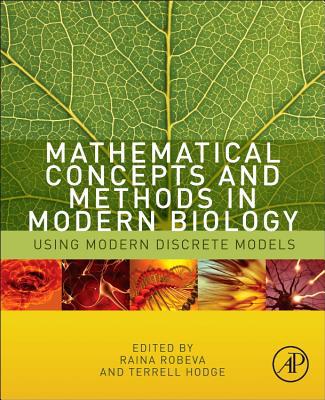Math 4500, Spring 2015
Math 4500, Spring 2015

"Mathematics is biology's next microscope, only better; Biology is
mathematics' next physics, only better." --Joel E. Cohen
"All models are wrong, but some are useful." --George E. P. Box
About the class
This class will be an introduction to mathematical modeling with a
particular focus on mathematical biology. We will sample from a
variety of problems and modeling techniques throughout the
class. Unlike most undergraduate math classes, the scope of this class
will be more about breadth than depth.
We will begin with some classical models such as the logistic and
predator-prey models for population growth and the SIR model in
epidemiology. The second half of the class will be spent learning about a
relatively new but widely popular trend of discrete modeling. In
particular, the field of mathematical biology has been transformed
over the past 15 years by researchers using novel tools from discrete
mathematics and computational algebra to tackle old and new
problems. These ideas have impacted a wide range of topics such as
gene regulatory networks, RNA folding, genomics, infectious disease
modeling, phylogenetics, and ecology networks and food-webs. In some
cases they have even spawned completely new research areas. This is
approach is arguably more accessible and appealing to many scientists
and engineers, encouraging cross-disciplinary communication and
collaborations.
Resources
- Course
Syllabus
- Simple mathematical models with very complicated dynamics, by Robert May, published in Nature, 1976
- Animated gif of cobwebbing in the logistic map. Compare to the
bifurication diagram. Both of these from
Wikipedia
- MATLAB files for cobwebbing, the predator-prey model, and the SIR model. Written by
Elizabeth Allman and John Rhodes, authors of Mathematical Models in Biology
- If smallpox strikes Portland C.L. Barrett,
S.G. Eubank, J.P. Smith. Scientific American, Vol. 292
(2005), pp. 54-61.
- Michaelis-Menten kinetics
- 2-minute video on gene expression
- John Conway's Game of Life segment, from Stephen
Hawking's The Meaning of Life.
- Game
of Life applet
- Analysis of
Dynamic Algebraic Models (ADAM), a web-based software tool for
multi-state discrete models of biological networks.
- TED talk by Stephen Wolfram: The theory of everything.
- Cellular Automaton Explorer, a free research, teaching, and exploration tool created by David Bahr.
- NetLogo, a multi-agent programmable modeling
environment.
- Sage: free open-source mathematics software.
Homepage |
Sage Notebook home |
Clemson
Sage Notebook server
- Sage worksheet: lac
operon Boolean network model
- In-class worksheet on reverse engineering
- In-class worksheet on RNA folding
- New Book! Algebraic and Discrete Mathematical Methods for Modern Biology, edited by Raina Robeva.
Homework
Homework 1: pdf |
tex. Topic:
Difference and differential equation models. Due Monday, January 19.
Homework 2: pdf |
tex. Topic: Population
models. Due Monday, January 26.
Homework 3: pdf |
tex. Topic:
Models of structured populations. Due Monday, February 2.
Homework 4: pdf |
tex. Topic:
Infecious disease models. Due
Monday, February 9. [MCM participants exempt]
Homework 5: pdf |
tex. Topic: Biochemical reaction networks. Due Monday, February 16.
Homework 6: pdf |
tex. Topic: Cellular automata and agent-based models. Due Wednesday, February 25.
Homework 7: pdf |
tex. Topic: Boolean networks models of the lactose operon. Due Friday, March 27.
Homework 8: pdf |
tex. Topic: Bistability and time-delays in Boolean networks. Due Friday, April 10.
Homework 9: pdf |
tex. Topic: RNA folding. Due Friday, April 24.
Lecture notes
Part I. Differential and difference equations
1. Introduction to modeling. 4 pages. Updated Jan 22,
2013.
2. Difference equations. 4 pages. Updated Jan 22,
2013. [typed version, updated Jan 12, 2015]
3. Analyzing nonlinear models
. 4 pages. Updated Jan 22, 2013.
4. Models
of structured populations. 4 pages. Updated Jan 29, 2013. [typed version, updated Jan 21, 2015]
5. Predator-prey models. 5
pages. Updated Jan 31, 2013. [typed version, updated Jan 28, 2015]
6. Infectious disease modeling. 7 pages. Updated Feb
6, 2013. [typed version, updated Feb 9, 2015]
7. Modeling biochemical reactions. 5 pages. Updated
Feb 27, 2013. [typed version, updated Feb 4, 2015]
Part II. Discrete and agent-based models
1. Cellular automata and agent-based models. Updated February 11, 2015.
2. The lac operon regulatory network
in E. coli. 10 pages. Updated Feb 14, 2013.
3. A Boolean
network model of the lac operon. 5 pages. Updated Feb 14, 2013.
4. Using
Gröbner bases to find fixed points. 7 pages. Updated Feb 19,
2013.
5. Bi-stability and a differential equation model of
the lac operon. 8 pages. Updated Mar 1, 2013.
6. Boolean
models of bistable systems. 6 pages. Updated Mar 5, 2013.
7. Overview: reverse engineering of polynomial dynamical systems 11 pages. Updated Apr 6, 2015.
8. Finite
dynamical systems and computational algebra preliminaries. 9
pages. Updated Mar 15, 2013.
Part III. Nucleic acids and phylogenetics
1. Combinatorial approaches to RNA folding. 16 pages. Updated April 15, 2015.
2. RNA folding via energy minimization. 15 pages. Updated April 15, 2015.
3. RNA folding via formal language theory. 14 pages. Updated April 15, 2015.
